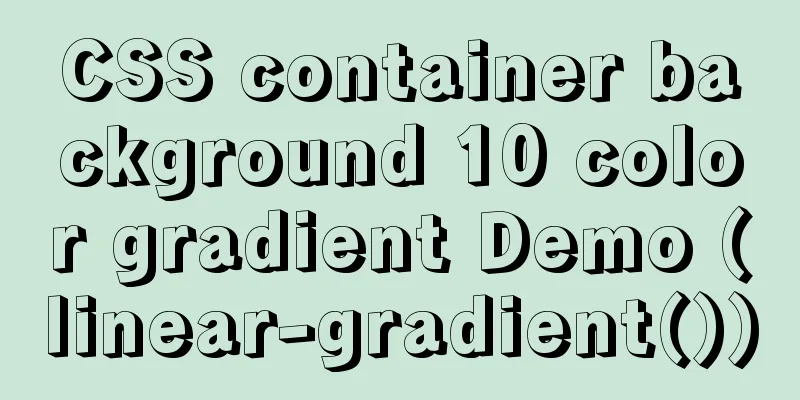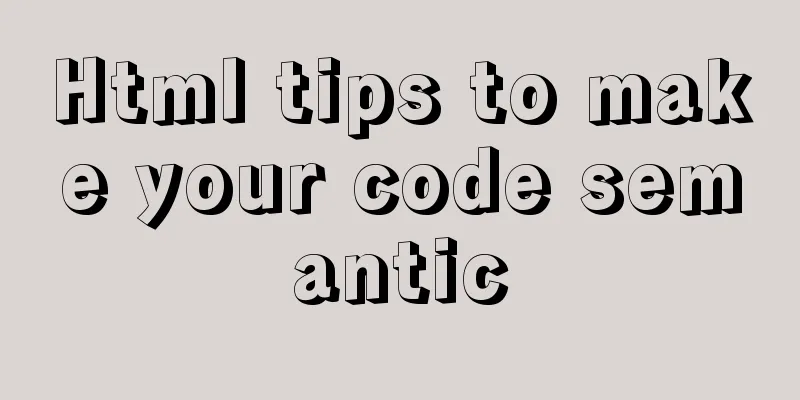How to capture exceptions gracefully in React

Preface No one is perfect, so there will always be errors in the code. Errors are not terrible, the key is how to deal with them.
ErrorBoundary EerrorBoundary came out in version 16. Someone asked me what about my version 15. I didn’t want to hear it. I use version 16 anyway, and of course 15 has The official website of ErrorBoundary has a detailed introduction, but this is not the point. The point is what exceptions it can capture.
constructor(props) {
super(props);
this.state = { hasError: false };
}
componentDidCatch(error, info) {
// Display fallback UI
this.setState({ hasError: true });
// You can also log the error to an error reporting service
logErrorToMyService(error, info);
}
render() {
if (this.state.hasError) {
// You can render any custom fallback UI
return <h1>Something went wrong.</h1>;
}
return this.props.children;
}
}
<ErrorBoundary>
<MyWidget />
</ErrorBoundary> The open source world is great. A great author has already encapsulated an excellent library like react-error-boundary.
import {ErrorBoundary} from 'react-error-boundary'
function ErrorFallback({error, resetErrorBoundary}) {
return (
<div role="alert">
<p>Something went wrong:</p>
<pre>{error.message}</pre>
<button onClick={resetErrorBoundary}>Try again</button>
</div>
)
}
const ui = (
<ErrorBoundary
FallbackComponent={ErrorFallback}
onReset={() => {
// reset the state of your app so the error doesn't happen again
}}
>
<ComponentThatMayError />
</ErrorBoundary>
)
Unfortunately, error boundaries do not catch these errors:
The original text can be found at the official website introducing-error-boundaries This article aims to capture errors in event handlers. But, so many event handlers, my God, how many do I have to write? . . . . . . . . . . . . . . . . . . .
handleClick() {
try {
// Do something that could throw
} catch (error) {
this.setState({ error });
}
}
Beyond Error BoundaryLet's first look at a table that lists the means and scope by which we can capture exceptions.
try/catch Can catch both synchronous and async/await exceptions. window.onerror , error event
window.addEventListener('error', this.onError, true);
window.onerror = this.onError
window.addEventListener('error') can capture more resources and record exceptions than window.onerror. unhandledrejection Note that the last parameter is true.
window.removeEventListener('unhandledrejection', this.onReject, true)
It catches uncaught Promise exceptions. XMLHttpRequest and fetch XMLHttpRequest is easy to handle and has its own onerror event.
ErrorBoundary.prototype.componentDidMount = function () {
// event catch
window.addEventListener('error', this.catchError, true);
// async code
window.addEventListener('unhandledrejection', this.catchRejectEvent, true);
};
use:
import ErrorCatch from 'react-error-catch'
const App = () => {
return (
<ErrorCatch
app="react-catch"
user="cxyuns"
delay={5000}
max={1}
filters={[]}
onCatch={(errors) => {
console.log('error reported');
// Report exception information to the backend and dynamically create tags new Image().src = `http://localhost:3000/log/report?info=${JSON.stringify(errors)}`
}}
>
<Main />
</ErrorCatch>)
}
export default
Applause, applause. Exception catching in event handlers Example My idea is very simple, use decorator to rewrite the original method.
@methodCatch({ message: "Failed to create order", toast: true, report:true, log:true })
async createOrder() {
const data = {...};
const res = await createOrder();
if (!res || res.errCode !== 0) {
return Toast.error("Failed to create order");
}
.......
Other codes that may cause exceptions...
Toast.success("Order created successfully");
}
Note the four parameters:
Maybe you will say that this is news that is certain and unreasonable. What if I had any other news?
@methodCatch({ message: "Failed to create order", toast: true, report:true, log:true })
async createOrder() {
const data = {...};
const res = await createOrder();
if (!res || res.errCode !== 0) {
return Toast.error("Failed to create order");
}
.......
Other codes that may cause exceptions...
throw new CatchError("Failed to create order, please contact the administrator", {
toast: true,
report: true,
log: false
})
Toast.success("Order created successfully");
}
Yes, that’s right, you can override the default options by throwing a custom CatchError. Type Definition
export interface CatchOptions {
report?: boolean;
message?: string;
log?: boolean;
toast?: boolean;
}
// It is more reasonable to write it in const.ts export const DEFAULT_ERROR_CATCH_OPTIONS: CatchOptions = {
report: true,
message: "Unknown exception",
log: true,
toast: false
}
Custom CatchError
import { CatchOptions, DEFAULT_ERROR_CATCH_OPTIONS } from "@typess/errorCatch";
export class CatchError extends Error {
public __type__ = "__CATCH_ERROR__";
/**
* Caught error * @param message message * @options other parameters */
constructor(message: string, public options: CatchOptions = DEFAULT_ERROR_CATCH_OPTIONS) {
super(message);
}
}
Decorators
import Toast from "@components/Toast";
import { CatchOptions, DEFAULT_ERROR_CATCH_OPTIONS } from "@typess/errorCatch";
import { CatchError } from "@util/error/CatchError";
const W_TYPES = ["string", "object"];
export function methodCatch(options: string | CatchOptions = DEFAULT_ERROR_CATCH_OPTIONS) {
const type = typeof options;
let opt : CatchOptions;
if (options == null || !W_TYPES.includes(type)) { // null or not a string or object opt = DEFAULT_ERROR_CATCH_OPTIONS;
} else if (typeof options === "string") { // string opt = {
...DEFAULT_ERROR_CATCH_OPTIONS,
message: options || DEFAULT_ERROR_CATCH_OPTIONS.message,
}
} else { // Valid object opt = { ...DEFAULT_ERROR_CATCH_OPTIONS, ...options }
}
return function (_target: any, _name: string, descriptor: PropertyDescriptor): any {
const oldFn = descriptor.value;
Object.defineProperty(descriptor, "value", {
get() {
async function proxy(...args: any[]) {
try {
const res = await oldFn.apply(this, args);
return res;
} catch (err) {
// if (err instanceof CatchError) {
if(err.__type__ == "__CATCH_ERROR__"){
err = err as CatchError;
const mOpt = { ...opt, ...(err.options || {}) };
if (mOpt.log) {
console.error("asyncMethodCatch:", mOpt.message || err.message , err);
}
if (mOpt.report) {
// TODO::
}
if (mOpt.toast) {
Toast.error(mOpt.message);
}
} else {
const message = err.message || opt.message;
console.error("asyncMethodCatch:", message, err);
if (opt.toast) {
Toast.error(message);
}
}
}
}
proxy._bound = true;
return proxy;
}
})
return descriptor;
}
}To sum upUse decorators to rewrite the original method to capture errors. Customize the error class and throw it to override the default options. Increased flexibility.
@methodCatch({ message: "Failed to create order", toast: true, report:true, log:true })
async createOrder() {
const data = {...};
const res = await createOrder();
if (!res || res.errCode !== 0) {
return Toast.error("Failed to create order");
}
Toast.success("Order created successfully");
.......
Other codes that may cause exceptions...
throw new CatchError("Failed to create order, please contact the administrator", {
toast: true,
report: true,
log: false
})
} Next step What’s the next step? Let’s take it one step at a time. Expanding results
@XXXCatch
class AAA{
@YYYCatch
method = () => {
}
}
Abstract, abstract, abstract goodbye. Final Thoughts error-boundaries This is the end of this article about how to capture exceptions in React elegantly. For more content about React catching exceptions, please search for previous articles on 123WORDPRESS.COM or continue to browse the following related articles. I hope you will support 123WORDPRESS.COM in the future! You may also be interested in:
|
<<: MySQL database migration quickly exports and imports large amounts of data
Recommend
Seven ways to implement array deduplication in JS
Table of contents 1. Using Set()+Array.from() 2. ...
Introduction to adding new users to MySql, creating databases for users, and assigning permissions to users
1. Add a new user Only allow local IP access crea...
MySQL million-level data paging query optimization solution
When there are tens of thousands of records in th...
Methods to enhance access control security in Linux kernel
background Some time ago, our project team was he...
js native waterfall flow plug-in production
This article shares the specific code of the js n...
Example code for changing the style of other tags by hovering the mouse using CSS
Preface: As far as I know, currently CSS can only...
How to implement animation transition effect on the front end
Table of contents Introduction Traditional transi...
Docker deployment RabbitMQ container implementation process analysis
1. Pull the image First, execute the following co...
Detailed explanation of the solution to the Baidu https authentication prompt "Please redirect your http site 301 to the https site"
I recently wanted to convert a website to https a...
Building a selenium distributed environment based on docker
1. Download the image docker pull selenium/hub do...
A brief discussion on the binary family of JS
Table of contents Overview Blob Blob in Action Bl...
Several reasons for not compressing HTML
The reason is simple: In HTML documents, multiple ...
How to modify the forgotten password when installing MySQL on Mac
1. Install MySQL database on mac 1. Download MySQ...
Using js to implement simple switch light code
Body part: <button>Turn on/off light</bu...
Detailed explanation of the concept of docker container layers
Table of contents 01 Container consistency 02 Con...









